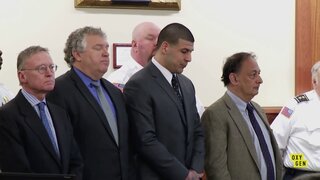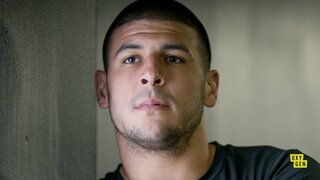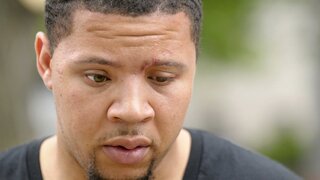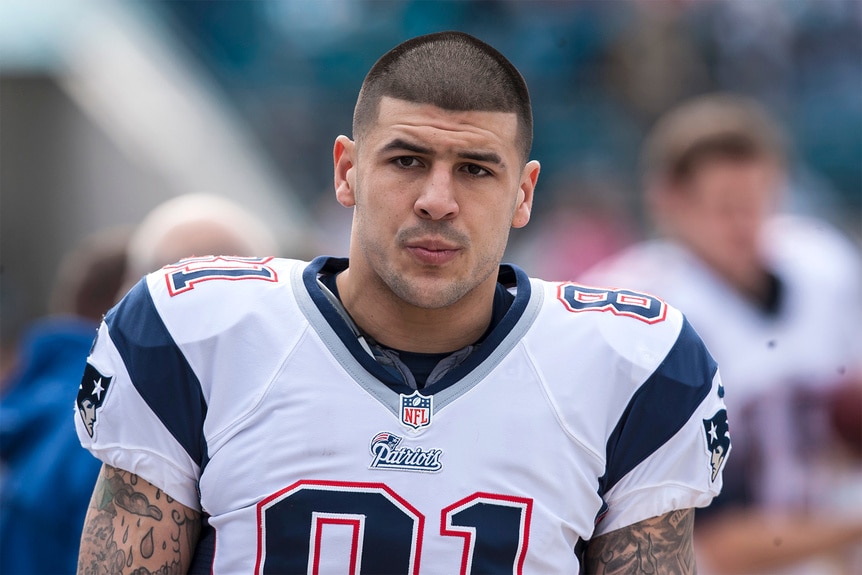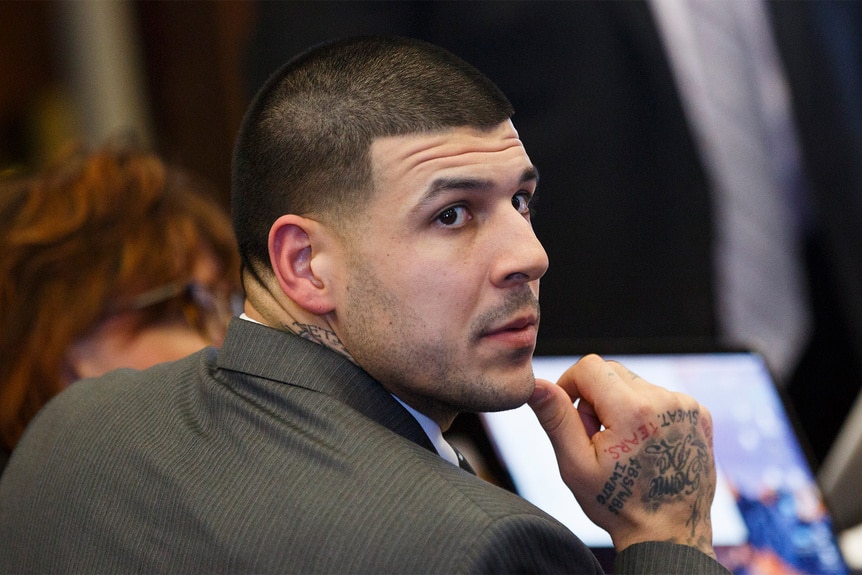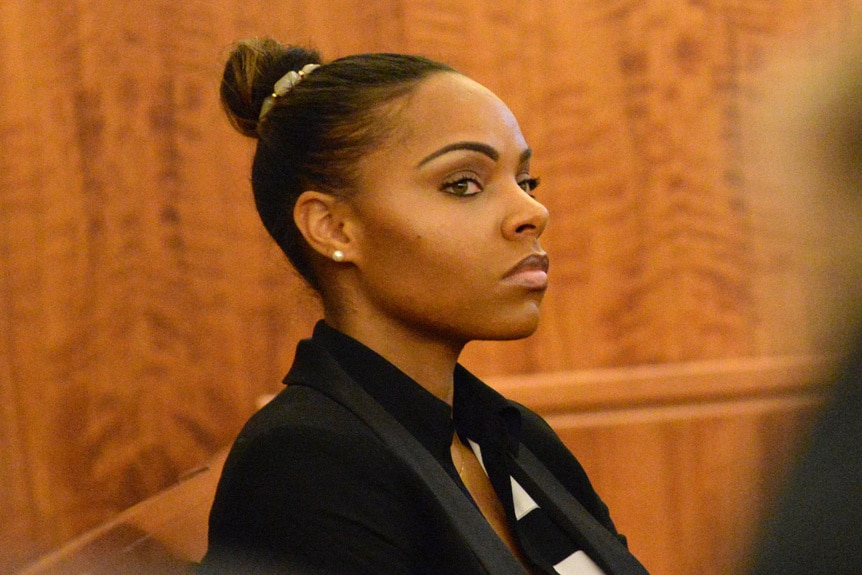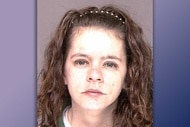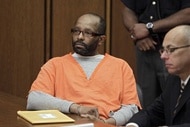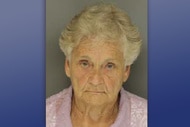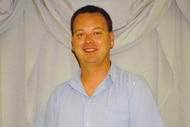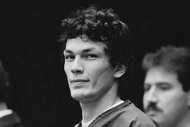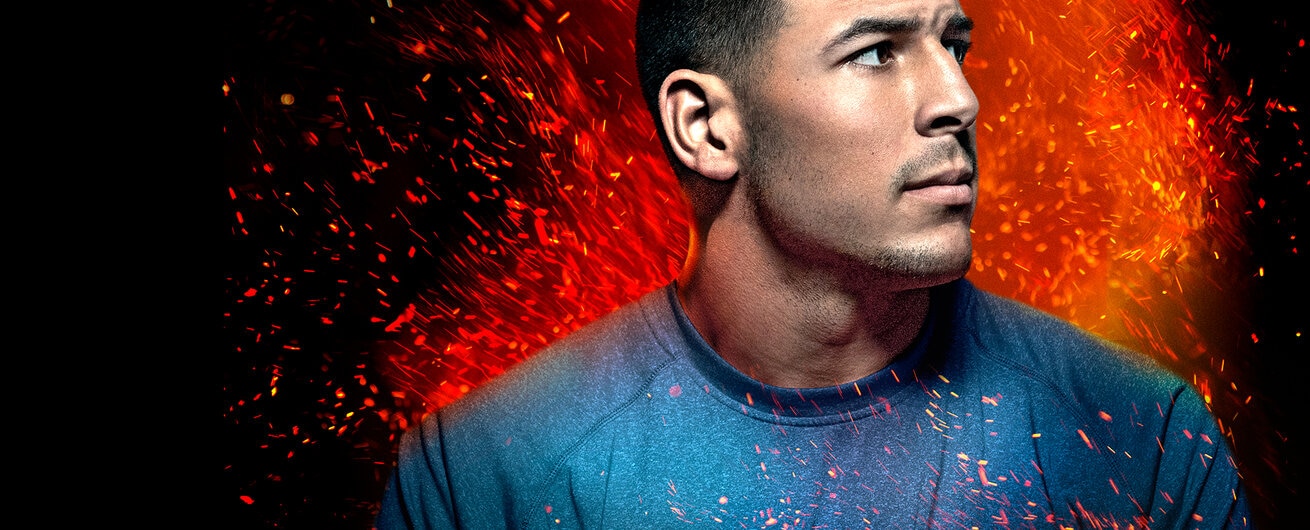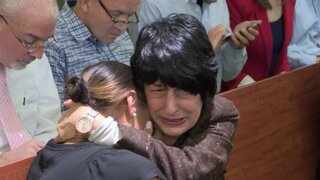Create a free profile to get unlimited access to exclusive videos, breaking news, sweepstakes, and more!
He Was an NFL Star — Then He Turned to Murder: All About Aaron Hernandez's Life and Crimes
The former New England Patriots tight end would be tied to several murders before ending his own life at 27 years old.
Football superstar-turned-convicted killer Aaron Hernandez led a dual life filled with turmoil and complexity. The former New England Patriots tight end — once regarded as the nation’s best in the position while still playing for the University of Florida — was slated to be one of the greatest athletes in NFL history before his career was derailed by a litany of violent run-ins and his connections to several murders.
Hernandez’s tragic life and untimely death continue to grab the spotlight, and was previously featured in two Oxygen programs: the 2018 standalone Aaron Hernandez, McNair & Dele: Dangerous Games and the two-part special Aaron Hernandez Uncovered, now available to watch on Oxygen and Peacock.
Keep reading to learn more about the rise and fall of the NFL legend Aaron Hernandez.
What was Aaron Hernandez's Relationship with Father Dennis?
The Connecticut-born Aaron Hernandez had a troublesome upbringing, as detailed by The Boston Globe’s renowned Spotlight investigative team in 2018. Raised in Bristol by parents Dennis and Terri Hernandez, Hernandez’s father allegedly subjected him and his only sibling, brother Dennis “D.J.” Hernandez (who also used the name Jonathan Hernandez as a pen name), to physical abuse, much of which surrounded expectations that the sons would excel in sports.
Jeff Morgan, a former football coach at Bristol Central High School, recollected a time when Hernandez — still a freshman — was kicked out of a senior dance for drinking alcohol.
“Then, the next time we saw him, he looked like I guess his father did discipline him some,” said Morgan. “He had a black eye. I’m assuming that’s where it came from.”
Aaron Hernandez’s attorney, George Leontire, and D.J. Hernandez claimed an older boy sexually molested the future NFL star at age 6. Many later reported that Hernandez struggled with his sexuality throughout the years while raised by a homophobic father, as detailed by The Boston Globe.
“F*****’ was used all the time in our house,” said D.J. Hernandez in the 2018 exposé. “All the time. Standing. Talking. Acting. Looking. It was the furthest thing my father wanted you to even look like in our household. This was not acceptable to him.”
Dennis Hernandez died in 2006 following complications related to hernia surgery, and most agree it had a negative impact on the young athlete, who was then still a junior in high school.
Still, Hernandez excelled in high school sports, and just after his 17th birthday — much to the chagrin of some individuals years later — he was recruited by the Florida Gators. His off-the-field troubles began there, despite having outstanding success, and he was eventually drafted by the NFL’s New England Patriots in 2010, playing alongside Tom Brady and fellow tight end Rob Gronkowski under famed football coach Bill Belichick.
Even then, sports officials were reluctant, given Hernandez’s penchant for partying and drug use, but he continued to prove himself as an extraordinary athlete.
RELATED: The Wives and Girlfriends Who Aided or Stood By the World's Most Notorious Killers
Aaron Hernandez's Legal Troubles
Despite Hernandez’s athletic prowess, his personal struggles got in the way of achieving the greatness seen by some of his teammates even before his time with the Patriots.
In April 2007, soon after arriving in Florida as a teen and playing alongside future NFL Denver Broncos star Tim Tebow, Hernandez consumed alcohol and got into an altercation with a restaurant employee in Gainesville, ultimately refusing to pay the bill, creating a scene, and punching the manager to such an extent that his eardrum ruptured, according to The Ocala StarBanner. Tebow was a witness in the case, though the case was eventually settled out of court.
Five months later, a witness identified Hernandez as a suspect who’d opened fire on a Ford Crown Victoria with three men inside, according to The Gainesville Sun. One victim was shot in the head and needed part of his skull surgically removed, and another sustained a gunshot wound to the arm, though there were no fatalities.
Earlier that evening, the victims and some of Hernandez’s college teammates reportedly had an altercation at The Venue nightclub in Gainesville shortly before the shooting.
Hernandez was later cleared of any wrongdoing, and the witness who’d previously ID’d Hernandez as the shooter recanted his statements, according to the Gainesville outlet.
Hernandez’s behavior and substance abuse only worsened with time, and those closest to him reported increasing violent outbursts and paranoia, as detailed in Aaron Hernandez Uncovered. He smoked marijuana excessively, and his close friends told Rolling Stone that he was a heavy user of angel dust (phencyclidine, better known as PCP).
Hernandez continued to help the Patriots in victory after victory, and in 2012, the NFL renewed his contract, worth $41 million, according to Sporting News.
RELATED: Former TikTok Star Gets Life Sentence for Double Murder: "He Will Never Be a Free Man"
What happened to Odin Lloyd?
Hernandez was arrested days after the June 17, 2013 murder of semi-pro football player Odin Lloyd, 27, who was found shot to death in an industrial park located about one mile from Hernandez’s North Attleborough, Massachusetts home, as featured in Aaron Hernandez Uncovered.Lloyd was the boyfriend of his fiancée Shayanna Jenkins' sister, according to CNN.
A search of Hernandez’s residence revealed a ton of evidence linking Hernandez to the murder, including timestamped security footage showing Hernandez in a rented Nissan Altima and his purchase of the same blue cotton candy Bubblicious gum found on one of the shell casings connected to the crime scene.
Security footage captured the Altima picking Lloyd up at around 2:32 a.m. and then heading to the section where Lloyd was shot to death before returning to Hernandez’s home.
Around the time, Lloyd and his sister exchanged several texts, and when asked who he was with, Lloyd texted, “NFL.”
As for a motive, investigators looked into the possibility that Llyod discovered the athlete’s bisexuality, as reported by NBC Sports Boston.
Hernandez’s arrest for first-degree murder gained widespread media attention, and he was immediately axed from the NFL, shattering his legacy.
The Double Homicide of Daniel de Abreu and Safiro Furtado
It wasn’t until after Hernandez’s arrest for the Lloyd homicide that he became the prime suspect in the July 16, 2012 murders of Cape Verde friends Daniel de Abreu, 29, and Safiro Furtado, 28, two men Hernandez came across while at a Boston nightclub, according to CBS News. Prosecutors later said Abreu spilled a drink inside the club and smiled, which Hernandez perceived as “a sign of disrespect.”
The defense, however, claimed it was Hernandez’s best friend and accused drug dealer, Alex Bradley, who fired five shots into the victims’ parked car, according to CNN.
“I knew something was brewing,” Bradley testified. “He was just agitated, and I just knew what would happen.”
The double slaying took place just weeks before Hernandez signed his $41 million NFL contract.
Six months after Abreu and Furtado’s deaths, Hernandez was accused of shooting Bradley in the face and leaving him for dead, resulting in the loss of one of Bradley’s eyes. Bradley, a star witness in the double murder trial, testified that he and Hernandez were visiting a Florida strip club before he fell asleep in a car. When he came to, he said Hernandez had the gun pointed at him, and he was found bleeding the following day in a parking lot, as previously reported by Oxygen.com.
Hernandez allegedly shot Bradley for fears he’d go to authorities about the double homicide, according to Boston’s NPR station WBUR, purportedly the result of Hernandez's growing paranoia.
In April 2015, Hernandez was found guilty of killing Odin Lloyd and sentenced to life in prison without the possibility of parole. Two years later, he was acquitted of the 2012 double murder and criminal charges related to shooting Bradley.
In the latter case, he was found guilty only for one count: illegal possession of a firearm.
Aaron Hernandez's Death, Abatement, and Posthumous C.T.E. Diagnosis

On April 19, 2017, less than one week after Hernandez was acquitted of the double murder, the disgraced football legend was found hanged in his cell at the Souza-Baranowski Correctional Center in Massachusetts. His death was ruled a suicide.
He was 27 years old, leaving behind his fiancée and their 4-year-old daughter.
Due to “abatement ab initio,” a controversial legal loophole in Massachusetts, Hernandez was innocent in the eyes of the law since, at the time of his death, he was in the process of appealing his murder conviction. Judge Susan Garsh said she had “no choice” but to vacate the conviction because of the antiquated statute, according to USA Today.
Debate exists over whether Hernandez knew this when taking his own life.
“In our book, he’s guilty, and he’s always going to be guilty,” Lloyd’s mother, Ursula Ward, said after the hearing, according to USA Today.
A postmortem examination of Hernandez’s body revealed the athlete suffered from “severe” chronic traumatic encephalopathy (C.T.E.), a degenerative brain disease known to cause mood swings, lack of impulse control, and uncontrollable aggression, as previously reported. C.T.E. stems from repeated head injuries, and though it can only be diagnosed after death, it is a familiar diagnosis among football athletes.
According to a February 2023 report by the Boston University’s C.T.E. Center — where Hernandez’s brain was examined following his death — experts studied the brains of 376 former NFL players and formally diagnosed 345 (almost 92%) as having C.T.E.
Researchers emphasize that their findings do not reflect the number of athletes who have C.T.E. or have had C.T.E. in the past, as “brain bank samples are subject to selection biases.”
Learn more in Aaron Hernandez Uncovered, now available to watch on Oxygen and Peacock.

